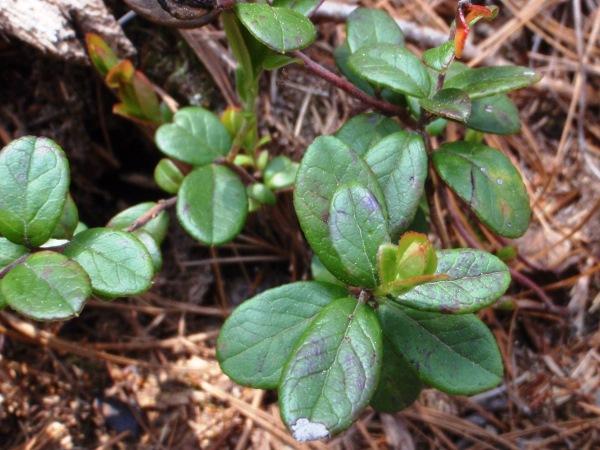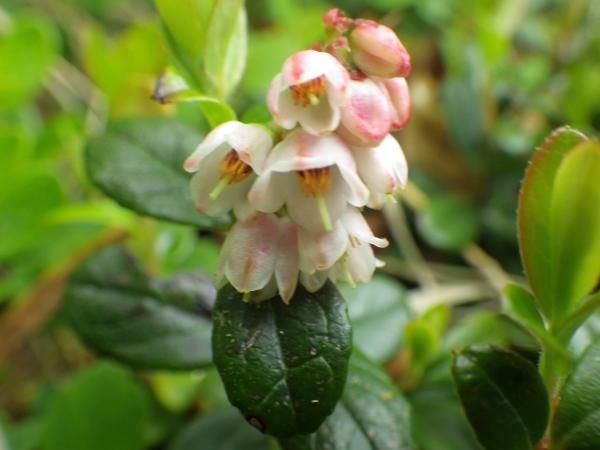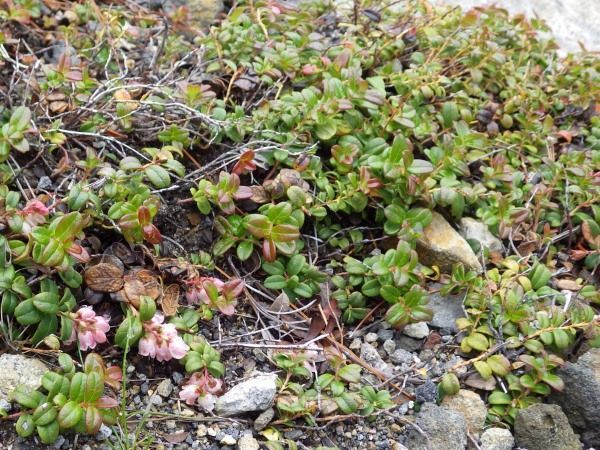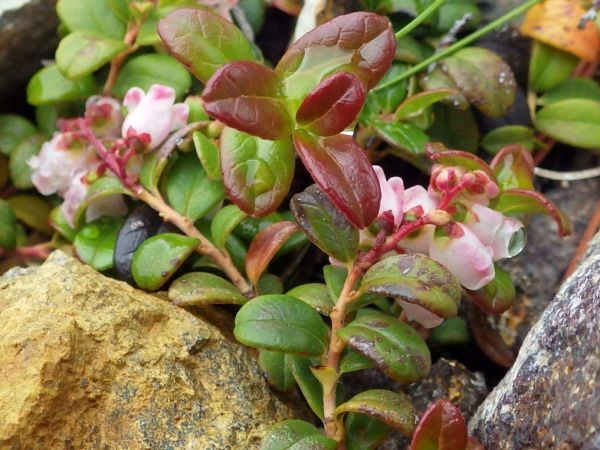(First upload on September 13 2008. Last on October 24 2017) [ 日本語 | English ]
Mount Usu / Sarobetsu post-mined peatland
From left: Crater basin in 1986 and 2006. Cottongrass / Daylily
HOME > Plant list (植物リスト) > Ericaceae (ツツジ科) > Vaccinium vitis-idaea

Subfamily Vaccinoideae (スノキ亜科)Vaccinium L. (スノキ)Kokemomo (コケモモ, 苔桃), mountain cranberry, lingonberry, and more namesLifeform: short, evergreen shrub Distribution: circumpolar and circumboreal regions in the northen hemisphere |
Habitat: sunny gravel and sandy soils in acidic and wet site → Wetland vegetation
Categorized into an alpine plant in Honshu Reproduction: vegetatively reproduced after fire (火災) (Tsuyuzaki et al. 2013)Use: edible fruit (commercial cultivation → US Pacific Northwes) Two subspecies (Hultén 1968)ssp. minus (G. Lodd.) Hultén = syn. var. minus G. Lodd., discarded, the North America, leaf 7-20 mm longssp. vitis-idaea, Eurasia, leaf 10-25 mm long |
|
 1
1
 2
2
 3
3
[1-3] on Poker Flat Rsearch Range. [1] on August 1, 2007. There were numerous fruits in the summer of 2007, but were less in the summer of 2008. The area dominated by Picea mariana was burnt by a wildfire in 2004. [2/3] on August 16 2012.
 4
4
 5
5
 6
6
 7
7
 8
8
[4] in a pine forest on the slope of Mount Meakan (雌阿寒岳), eastern Hokkaido, on June 25 2013. This mountain is one of the most active volcanoes in Hokkaido. [5] at the high elevation of western slope on Mount Yotei (羊蹄山), central Hokkaido, on June 28 2014. [6] along the seacoast of Hamatonbetsu, where this species established well, in Sarufutsu Village, northern Hokkaido, on August 27 2015. [7/8] near the bothie (hut escaped from mountainous disasters) of Mount Tokachi (十勝岳), central Hokkaido, on June 27 2017.